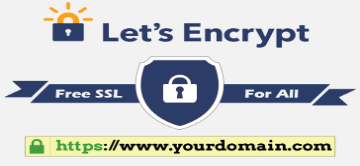Let’s Encrypt & Nginx. How-to Install & Configure
SSL is an acronym for Secure Sockets Layer, a global standard security technology adopted by Netscape in 1994. SSL is designed to establish encryption and identity assurance. It enables encrypted communication between a web server and a web browser. Now it’s important have websites secured by SSL. In this article we will install ssl certificate from Let’s Encrypt.
To Install Let's Encrypt you can follow the Installation Instruction from certbot - https://certbot.eff.org/lets-encrypt/ubuntuxenial-nginx.htm.
Now you can safely receive a certificate already in fact. Do not forget to explicitly specify all the necessary subdomains, such as www.
certbot certonly -d www.unixsys.org -d unixsys.orgCertificates are issued for three months. Not for six months, not for a year, but only for three months. Naturally, this raises questions. Do I need to go through this procedure in three months? Is it necessary to do this always to old age? Maybe it’s worth all the same to invest in a paid certificate to forget about all this and not remember a couple of years?
But no, do not rush to find means of payment! As promised at the beginning of the article, there are no problems with updating certificates.
You just need to add the -allow-subset-of-names switch to the certbot call in /etc/cron.d/certbot:
certbot -q renew — allow-subset-of-names
